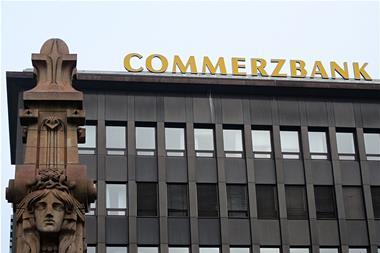The press releases rolled in on Sunday morning from banks patting themselves on the back for passing the European Central Bank’s (ECB’s) stress tests.
There was certainly some good news to report. Although 25 of the 130 banks under the spotlight failed the tests, the ECB concluded that only eight had failed to take sufficient steps to repair their balance sheets.
But from a property point of view, what were the key findings from the report and what are their implications?
The Asset Quality Review (AQR) part of the central bank’s examination made for particularly interesting reading. The ECB found €136bn (£107bn) of non- performing loans (NPLs) on top of the €743.1bn (£586bn) already identified by individual banks. As part of that total, it found 18% more commercial real estate loans than the banks had, totalling €36.7bn (£29bn), and 14% more residential loans, totalling €16.1bn (£12.7bn), bringing total real estate NPL exposure to €371.1bn.
The mismatch reflects the use of inconsistent definitions and out-of-date valuations, particularly in southern and eastern European countries. Greek and Slovenian NPL exposure had to be readjusted the most.
Analysts say that revealing the true extent of NPL exposure in this way should help end a culture of “amend and pretend” and encourage banks to sell-off distressed debt to meet capital requirements.
“The situation was often worse than the accounts indicated so banks didn’t want to take action. Now that the information is out in the open, it is likely that we will see an increase in loan sales next year,” says CBRE head of EMEA research Dr Neil Blake.
Revaluations conducted as part of the investigation should also help encourage more sales, adds KPMG director Marcus Evans. “Books have been written down in value to a more attractive level,” he says.
German banks and stress tests
The other good news for the industry is that the results of the ECB’s work could have been a lot worse. It had been predicted that some of the big German banks would fail the stress tests, but in the end all were given a clean bill of health. Shares in Commerzbank consequently jumped almost 10% in early trading on Monday.
That is not to say that the review was a whitewash. Peter Cosmetatos, CEO of CREFC Europe, describes it as “appropriately strict”. Some smaller banks took a hammering after the ECB exposed how much work needed to be done to return them to health. Four of the eight banks that need to take urgent action to plug capital gaps are Italian, including the world’s oldest surviving bank, the 1472-founded Monte dei Paschi, whose shares plummeted by more than 20%.
Closer to home, Permanent TSB was the one Irish bank on the list of eight. Irish finance minister Michael Noonan was quick to reassure the public on Sunday that the bank would pull through and given the rapidly rising property values in Ireland, most analysts agree.
In the UK, Lloyds made headlines because it came closer to the danger zone than expected. Shares dropped 2% to 75.09p and brokers at Jefferies downgraded the stock to ‘underperform’.
The close shave puts a question mark over whether Lloyds will pass the Bank of England’s own stress tests, which are expected to prove tougher-going. The central bank will assess lenders’ ability to cope with a crash in house prices of 35%, depreciation in the pound and a crash in the stock market of 30% and interest rate rise to 6%.
Lloyds is going to have a nervy build-up to Christmas — the results of the Bank of England’s work are due to be released in time for the holidays on 16 December.
Lenders in hot water
Austria: Oesterreichische Volksbanken
Cyprus: Hellenic Bank of Cyprus
Ireland: Permanent TSB
Italy: Monte dei Paschi di Siena, Banco Carige, Banco Popolare di Milano, Banco Popolare di Vicenza Portugal: Banco Comercial Portugues





























No comments yet